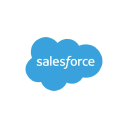How We Partnered With Salesforce To Develop A $330K/Month Laboratory Information Management SaaS
Hello! Who are you and what business did you start?
My name is Savitra Sharma, and I founded Third Wave Analytics in 2014. We are a cloud computing company specializing in “SaaS for science” - a platform for managing your entire laboratory in one place. We created Lockbox LIMS, the world's first cloud-based, end-to-end laboratory information management system (LIMS) built on the Salesforce platform. It provides laboratory staff with the world’s most customizable laboratory management system including sample management, protocol/procedure execution, freezer/storage management, inventory, and instrument management.
Lockbox is used internationally in a wide variety of organizations including R&D, quality control testing, life science research, and industrial laboratories to streamline operations and reduce the time needed to see results.

Download the report and join our email newsletter packed with business ideas and money-making opportunities, backed by real-life case studies.

Download the report and join our email newsletter packed with business ideas and money-making opportunities, backed by real-life case studies.

Download the report and join our email newsletter packed with business ideas and money-making opportunities, backed by real-life case studies.

Download the report and join our email newsletter packed with business ideas and money-making opportunities, backed by real-life case studies.

Download the report and join our email newsletter packed with business ideas and money-making opportunities, backed by real-life case studies.

Download the report and join our email newsletter packed with business ideas and money-making opportunities, backed by real-life case studies.

Download the report and join our email newsletter packed with business ideas and money-making opportunities, backed by real-life case studies.

Download the report and join our email newsletter packed with business ideas and money-making opportunities, backed by real-life case studies.















